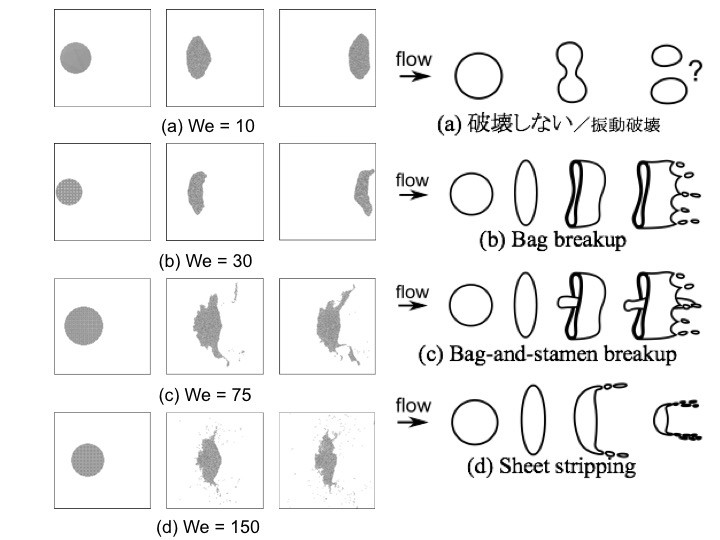Research on Particle-based Fluid Simulation Method for Improvement of Design and Development in Aeronautics
JAXA Supercomputer System Annual Report April 2017-March 2018
Report Number: R17EA1907
Subject Category: Aeronautical Technology
- Responsible Representative: Takashi Aoyama, Numerical Simulation Research Unit, Aeronautical Technology Directorate
- Contact Information: Kenichi Kubota kubota.kenichi@jaxa.jp
- Members: Kenichi Kubota, Takashi Takahashi, Hiroki Tsujimura
Abstract
In this project, a numerical code using particle method, which is known to be a meshless method to simulate fluid governed by Navier-Stokes equation, is being developed, and we investigate applicability of particle methods to aeronautics, especially the improvement in design and development of aircrafts.
Reference URL
N/A
Reasons for using JSS2
We used JSS2 to reduce computation time, because the computational cost of the particle method is known to be higher than grid methods. Parallel computing is effective on the reduction of computation time, and massive parallel computation on a super computer is planned in future studies.
Achievements of the Year
For developing a numerical simulation method of water drops exposed to airflow, a model to simulate aerodynamic force acting on a droplet composed of many particles was developed and implemented to the developing code. We simulated droplet breakup and compared the results with the breakup patterns which is known to be classified by the initial Weber. As a result, it was found that the characteristic behavior such as no-breakup in the low Weber number about 10 and sheet stripping in high Weber number about 150 can be captured with the developed model, whereas bag and bag-and-stamen breakup did not appear in the middle Weber number. Therefore, it can be said that the developed dynamic pressure model is applicable to the droplet exposed in the airflow for the Weber number above 150.

Fig.1: Result of numerical analysis for four Weber numbers (left) and experimentally known breakup patterns (right).
Publications
■ Presentations
1)Hiroki Tsujimura, Kenichi Kubota, Tetsuya Sato, Takashi Takahashi, Keiichi Murakami, “Numerical Model using MPS method on Droplet Breakup in Streaming Air”, 31st Symposium on Computational Fluid Dynamics, D09-3, 2017.
Usage of JSS2
Computational Information
- Process Parallelization Methods: MPI
- Thread Parallelization Methods: N/A
- Number of Processes: 2 – 4
- Elapsed Time per Case: 1.00 minutes
Resources Used
Fraction of Usage in Total Resources*1(%): 0.00
Details
Please refer to System Configuration of JSS2 for the system configuration and major specifications of JSS2.
| System Name | Amount of Core Time(core x hours) | Fraction of Usage*2(%) |
|---|---|---|
| SORA-MA | 0.00 | 0.00 |
| SORA-PP | 621.94 | 0.01 |
| SORA-LM | 0.00 | 0.00 |
| SORA-TPP | 0.00 | 0.00 |
| File System Name | Storage Assigned(GiB) | Fraction of Usage*2(%) |
|---|---|---|
| /home | 014.62 | 0.01 |
| /data | 146.23 | 0.00 |
| /ltmp | 2,994.79 | 0.23 |
| Archiver Name | Storage Used(TiB) | Fraction of Usage*2(%) |
|---|---|---|
| J-SPACE | 0.00 | 0.00 |
*1: Fraction of Usage in Total Resources: Weighted average of three resource types (Computing, File System, and Archiver).
*2: Fraction of Usage:Percentage of usage relative to each resource used in one year.
JAXA Supercomputer System Annual Report April 2017-March 2018


